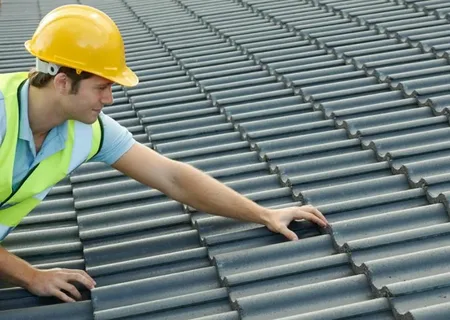Latest Advancements in Fish Tagging Systems for 2024: Revolutionizing Aquatic Research
In the evolving world of aquatic research and conservation, fish tagging system have played a pivotal role in understanding fish migration patterns, behavior, and survival rates. The year 2024 is poised to bring significant advancements in this field, as cutting-edge technologies enhance the accuracy, durability, and ethical considerations of fish tagging. These innovations are not only transforming fish husbandry but also advancing marine life research and supporting sustainable fisheries management.
This article will delve into the latest developments in fish tagging system, exploring their impact on research, the technologies driving these advancements, and the future of aquatic monitoring.
The Importance of Fish Tagging System in Aquatic Research
Fish tagging is a critical method used by marine biologists, ecologists, and fishery managers to track individual fish or groups over time. This system allows for the collection of data on fish behavior, migration routes, spawning habits, and survival rates, which in turn informs conservation efforts and sustainable fishery practices. Without fish tagging, managing fish populations, especially in large bodies of water like oceans and rivers, would be nearly impossible.
Fish tag systems can vary widely depending on the species, the objectives of the research, and the environment. These systems often range from simple external tags to sophisticated electronic or satellite-based systems, each with its unique advantages and challenges.
Major Advancements in Fish Tagging System for 2024
The fish tagging industry has experienced several game-changing advancements in recent years, and 2024 is set to continue this trend. Below, we explore some of the most significant breakthroughs in the field:
1. Smaller, More Efficient PIT Tags
Passive Integrated Transponder (PIT) tags have long been a staple in fish tagging. These tiny, implantable devices are ideal for tracking individual fish because they are cost-effective, durable, and do not require a power source.
In 2024, advancements in miniaturization and power efficiency have enabled the development of even smaller PIT tags, which are now being used on smaller fish species previously considered too delicate for tagging. These new-generation PIT tags also feature enhanced durability, making them ideal for long-term monitoring in challenging environments such as deep-sea habitats. Moreover, they offer better range and readability, allowing for improved data capture in more remote or difficult-to-access areas.
2. RFID Tagging Systems for Enhanced Accuracy
Radio Frequency Identification (RFID) tagging systems are also seeing significant upgrades in 2024. RFID technology, already widely used for tracking various marine species, has now become more accurate and reliable. The integration of machine learning and AI-based algorithms in RFID systems allows researchers to analyze larger datasets in real time, offering more accurate insights into fish movement and behavior.
Additionally, improved RFID antennas and receivers now enable tags to be read from longer distances, making it easier to track fish in open water environments without needing close-range proximity. These advancements in RFID fish tag systems are particularly useful for monitoring large fish populations, as they eliminate the need for extensive fieldwork and manual data collection.
3. Satellite Tagging for Global Fish Tracking
One of the most exciting developments for 2024 is the increasing use of satellite tagging technology for fish. Satellite tags allow researchers to track large migratory species, such as sharks and tuna, as they travel across vast distances. These tags communicate with satellites to provide location data in near real-time, offering insights into fish movement patterns, oceanic behavior, and interactions with other marine species.
Recent advancements have made satellite tags smaller, more lightweight, and energy-efficient, which reduces the drag on fish and minimizes disruption to their natural movements. Additionally, the battery life of these tags has been extended, allowing for longer tracking periods and more comprehensive datasets. Satellite tagging is a game-changer for large-scale studies focused on migratory species and global conservation efforts.
4. Bio-Logging Devices for In-Depth Behavioral Insights
Bio-logging devices, which record physiological and environmental data, have become increasingly important in fish tag systems. These devices can collect data on parameters such as temperature, depth, light levels, and even fish heart rates. By attaching bio-logging tags to fish, researchers can gain deeper insights into their behavior, environmental preferences, and physiological responses to changing conditions.
In 2024, bio-logging tags have become smaller, more versatile, and capable of storing larger amounts of data. Many now incorporate advanced sensors, enabling more detailed and precise data collection. The ability to record environmental variables in real-time allows researchers to monitor fish in their natural habitats with minimal interference.
5. Ethical Tagging Solutions: Minimizing Impact on Fish Health
A growing concern in the field of fish tagging is the potential impact on fish health and well-being. As such, ethical considerations have driven advancements in tagging systems. New materials, such as biodegradable or bio-compatible tags, are being introduced to minimize the long-term physical impact on fish. Furthermore, non-invasive tagging methods, such as external or detachable tags, are gaining popularity in 2024, allowing researchers to monitor fish without the need for surgical implantation.
Ethical tagging systems not only enhance the well-being of the fish being studied but also improve data accuracy, as healthier fish are more likely to behave naturally in their environments.
The Role of Voda IQ in Fish Tagging Advancements
Voda IQ, a leader in marine technology, has been at the forefront of developing state-of-the-art fish tagging system. Their innovative solutions are helping researchers and conservationists track aquatic species with increased precision and reduced environmental impact. By integrating cutting-edge technologies such as AI-powered data analysis and satellite tracking, Voda IQ is revolutionizing how we monitor and understand fish populations in both freshwater and marine environments.
Their products have played a significant role in advancing fish husbandry practices, helping researchers optimize breeding programs and ensure the sustainable management of fish populations.
The Future of Fish Tagging System: Looking Beyond 2024
While the advancements of 2024 have been impressive, the future of fish tag systems looks even more promising. Ongoing research into nanotechnology, AI-driven analytics, and smart data platforms could soon revolutionize how we track and study marine species. Future tagging systems may become entirely non-invasive, with tags that can self-detach or degrade after a certain period, ensuring no long-term impact on fish health.
Additionally, advancements in battery technology and wireless communication could further extend the lifespan and range of tags, allowing for continuous tracking over multiple years. These developments will enable researchers to gather even more detailed data on fish behavior, migration patterns, and the effects of climate change on marine ecosystems.
FAQs
1. What are the primary benefits of using fish tagging system?
Fish tag systems provide valuable data on fish migration patterns, population dynamics, and behavior. This data supports conservation efforts, sustainable fisheries management, and improved understanding of aquatic ecosystems.
2. How do PIT tags work in fish tag systems?
PIT tags are tiny, implantable devices that emit a unique signal when scanned by a reader. They are commonly used to track individual fish in both freshwater and marine environments due to their cost-effectiveness and durability.
3. Are RFID tags better than PIT tags for fish tracking?
RFID tags offer a broader range and can provide real-time data, making them ideal for tracking large populations over long distances. However, PIT tags are more affordable and suitable for smaller fish or localized studies.
4. How does satellite tagging benefit migratory species research?
Satellite tags allow researchers to track the movement of migratory species across vast distances, providing data on routes, behavior, and interactions with their environment. This information is crucial for global conservation efforts.
5. Are fish tag systems harmful to the fish?
Modern fish tag systems, especially those developed with ethical considerations, are designed to minimize harm. New advancements include biodegradable tags and non-invasive external tags, which reduce the impact on fish health.
Conclusion
As the world of aquatic research and fish husbandry continues to evolve, so do the tools used to monitor and protect marine life. The latest advancements in fish tagging system for 2024 are not only enhancing research capabilities but also ensuring that these systems are more ethical and less intrusive. From PIT tags to sophisticated satellite tracking solutions, these technologies are opening new doors for researchers and conservationists alike.
How do you think these advancements will influence the future of fish conservation efforts?
Also know about How Accurate Are PIT Tags Compared to Other Fish Tagging Methods in 2024?














Post Comment